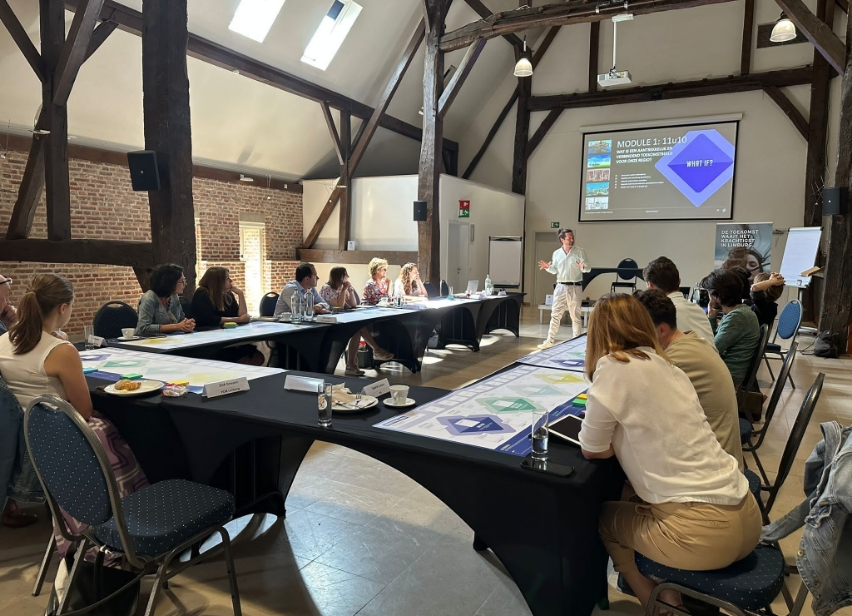Provotyping for Sustainable Innovation
From Vision to Celebration
Abraham Lincoln once said, “Tell me and I will forget; show me and I may remember; involve me and I will learn.” This quote perfectly captures the essence of the provotyping methodology, which revolves around collaboration, experimentation, and demonstration. Provotyping is not limited to a single department; it is a practice that involves every discipline within a company to create a tangible and visual vision of its future products, solutions, and impact. This article explores the key steps of the provotyping process and showcases its significance in fostering sustainable innovation. Let’s dive in!

1. Vision: What If?
The first step of provotyping involves envisioning a future that is ambitious, wild, and mind-stretching. To start, a series of “what if” questions are formulated, exploring potential future scenarios. For instance, what if owning a personal car became illegal in cities? What if an entire country adopted a vegan lifestyle? What if electricity and fuel were entirely renewable? These questions form the basis of the future vision.
.
2. Coalition of the Willing: Collaborative Partnerships
The next step is to build a “Coalition of the Willing,” a group of companies or individuals unified by a shared and desirable future vision. This coalition collaborates generously, sharing expertise and resources to turn the vision into reality. Identifying drivers and barriers, determining potential beneficiaries, and engaging the necessary people and organizations are crucial in forming an effective coalition.
.
3. Approval Typing: Making It Real
The heart of provotyping lies in making the vision real through “Approval Typing,” which involves designing and setting up prototypes that showcase the potential of the future vision. These prototypes are limited in time and space, making them feasible to set up quickly. For example, a pop-up car clubhouse, a local brewery producing plant-based meat, or a test environment for seaweed-based biofuels can be developed to demonstrate the possibilities of the future.
.
4. Success Factors of Provotyping
To ensure the success of provotyping, there are five key factors to consider:
> Radically New Yet Familiar: Prototypes should introduce something new while providing familiar elements to help audiences relate and engage.
> Designing an Experience: Prototypes are not just ideas but interactive experiences that evoke desired interactions and learnings.
> Realization and Ownership: Turning the vision into a real and functioning prototype generates a sense of ownership and commitment among stakeholders.
> Curiosity and Engagement: Prototypes generate curiosity, encouraging people to ask questions, share advice, and actively participate in the project.
> Celebrate Progress: Celebrating each step forward, no matter how small, helps build a positive narrative and attracts more people to support the initiative.
.
5. Celebrating Sustainable Success
Sustainability efforts should be celebrated openly and transparently, acknowledging that perfection is not the goal but rather a continuous journey of improvement. Celebrating progress fosters a sense of community, attracts more support, and builds credibility with stakeholders and governments.
.
Conclusion
Provotyping is a powerful methodology for driving sustainable innovation within companies and industries. It enables visionary thinking, fosters collaboration, and empowers organizations to create tangible and impactful solutions. By starting with an ambitious future vision, forming coalitions of willing partners, creating prototypes, and celebrating successes, companies can revolutionize their industries, all while keeping sustainability at the core of their strategies. So, let’s embrace provotyping and be the change-makers that our future needs.
BOOK YOUR PROVOTYPING SESSION

